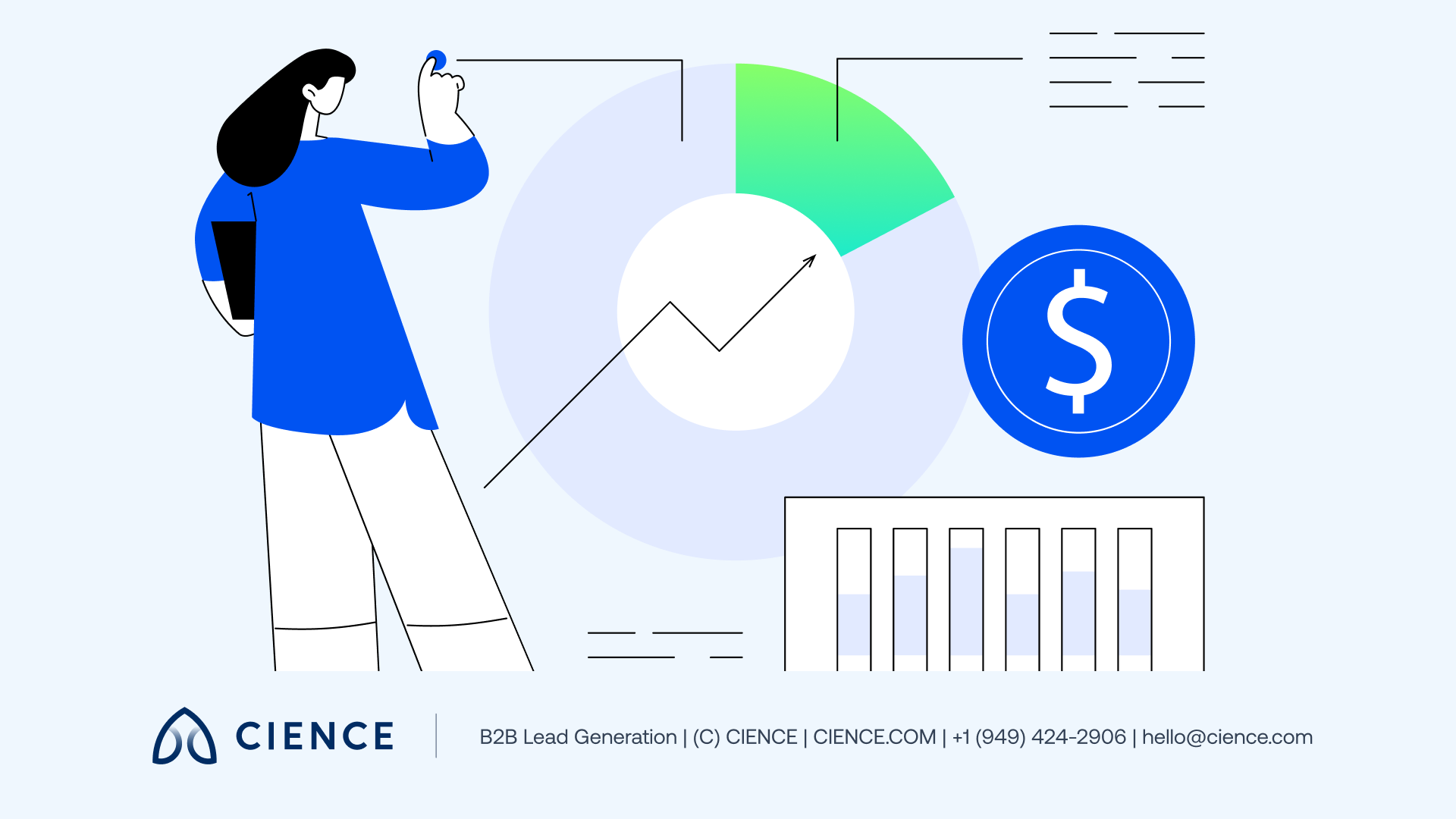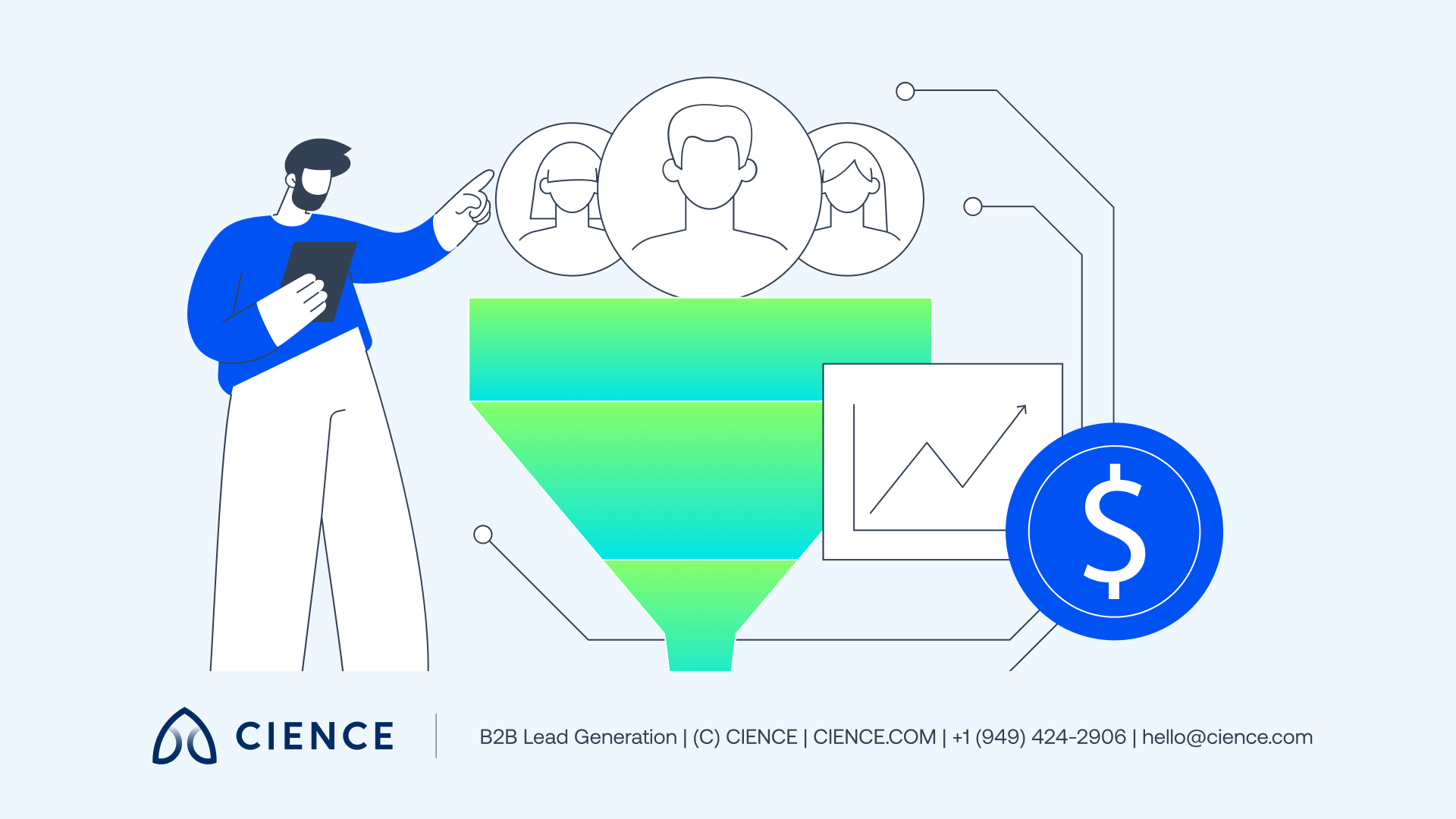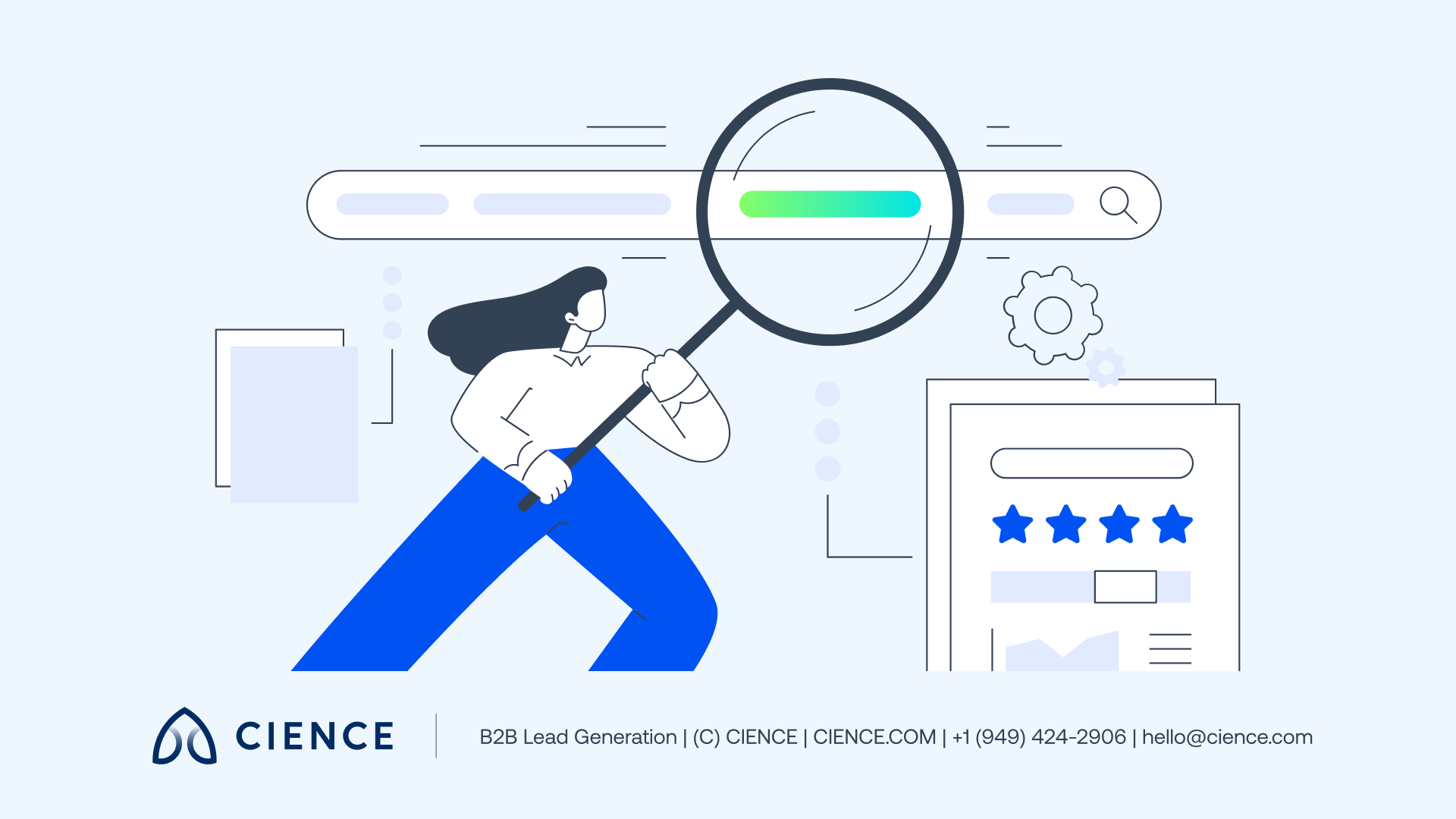SaaS Demand Generation 101: What You Should Know Beyond 2024
You've set up a grand stage production with a dazzling set, top talent, and meticulous rehearsals. When the curtain rises, the audience is sparse and indifferent. Despite your best efforts, the applause is faint, and the reviews are lukewarm.
This is exactly how it feels to have a mismatched SaaS demand generation effort – a disheartening lack of engagement and results despite all the marketing efforts.
Today, competition is too fierce in any industry to allow missteps. That's why you need to understand how to shape your demand generation strategy to be on par with the trends and a long-term thriving effort.
In this blog, we will uncover the path to demand generation that fills the seats, captivates your audience, and improves the bottom line. Let’s dive in.

What is Demand Generation for Saas?
Demand generation is often misunderstood as lead generation. However, demand generation encompasses a wide range of marketing activities that drive awareness and interest in your SaaS product.
This involves nurturing your prospects through the entire buyer journey. SaaS demand generation involves creating long-term relationships that create consistent, high-quality demand for your product.
However, we know that this can be an overwhelming and complex process. This is why we will guide you through it step-by-step, addressing the challenges first.
Key Challenges in Demand Generation
Every SaaS company’s demand generation challenge might look different – however, here are some command hurdles:
- Overwhelming number of tactics: There are so many approaches to choose from that markets often are paralyzed by indecision. There are webinars, emails, campaigns, social media advertising, content marketing, etc.
- Creating a cohesive strategy: Creating a unified SaaS demand generation strategy can be challenging because there are multiple touchpoints across teams, and each team may be focused on its own KPIs. Coordinating efforts across different channels, messaging, and target audiences requires careful planning and collaboration. Limited resources and siloed data can further complicate the development of a cohesive approach.
- Resource constraints: Many SaaS marketing teams are stretched thin. Juggling operational demands with the need for long-term growth is a challenging task. Tight budgets and personnel constraints make it easier to implement demand generation programs. market
- Handoff between marketing and sales: Once the marketing team qualifies the lead, the connecting bridge to the sales team for a smooth handoff is essential. Lack of alignment between the teams and incorrect timing can cause warm leads to go cold. Therefore, both marketing and sales teams must give equal importance to lead management.
📑 Read more: Top 4 B2B Marketing Mistakes and How to Avoid Them

Effective Strategies for SaaS Demand Generation with Examples
To overcome these challenges, adopting a structured and strategic approach to demand generation is crucial. Here are some actionable strategies for you to implement right away:
#1. Building a Demand Generation Flywheel
The demand generation flywheel is a continuous cycle that connects various marketing activities and channels. It ensures that prospects are consistently engaged and move through the buyer journey with little resistance, ultimately driving customer loyalty and growth.
This model is essential for a constant stream of leads.
HubSpot exemplifies this approach well by using its blog, social media, and email marketing channels. According to HubSpot, a company that implemented the flywheel approach saw a 30% increase in qualified leads.
Here’s what you can do:
- Identify the key touchpoints: Map out the customer journey and understand where and how the customers interact with your brand.
- Create integrated campaigns: Develop campaigns across your SaaS demand generation that leverage multiple channels, such as content marketing and social media.
- Measure and optimize: Regularly analyze your channels' performance. Then, based on the data, adjust your strategy for consistent efficiency.
#2. Understand Your Product Positioning
Understanding product positioning is crucial unless you want to end up on your SaaS stage without an audience or recognition. This helps you resonate with the right target audience and differentiate yourself from competitors.
When you understand your product and brand positioning, it becomes easier to express your brand correctly. According to Gitnux, 45% of a brand’s presence comes from its actions and presentation strategy. To do this well, you must know your SaaS band who it is speaking to.
For example, Canva has successfully established itself as an accessible design platform for non-designers. Its user-friendly features and affordability have attracted over 100 million users to the brand.
Here’s how you can do it:
- Define your Unique Selling Proposition (USP): Articulate “why” your brand exists, who it serves, what makes your product unique, and why customers should choose from you.
- Conduct thorough market research: You can devise information only after collecting audience data and market insights. Gather insights from customer interviews and surveys to understand what your audience is looking for.
Refine your messaging: Once you understand who and what you are speaking to, craft targeted messaging that speaks directly to your audience and refine them with the changing needs.

#3. Aligning Pricing Strategy with Demand Generation
Neil Patel, a well-known marketer and entrepreneur, once said, “Don’t optimize for conversions; optimize for revenue.” This perspective emphasizes the importance of focusing on strategies that drive long-term profitability rather than immediate sales.
A well-defined and researched pricing strategy can enhance your demand generation efforts by attracting customers and driving conversions. Value-based pricing, freemium models, and transparent communication with high-ticket products are essential in SaaS. This strategy is not only essential for new customers but also for retaining existing ones and reducing churn.
The complex buyer journeys typical of SaaS purchases necessitate targeted, data-driven marketing strategies that engage multiple stakeholders at various stages. A robust demand generation approach is essential for sustainable growth.
For example, Zoom’s freemium model allowed its explosive growth. In 2020, Zoom reported over 300 million daily meeting participants, mainly due to its pricing strategy.
Here’s how you can do it:
- Analyse competitor pricing: Understand the differentiator you can provide with pricing and features to help you stand out.
- Test pricing models: Experiment with different pricing tiers and promotional offers to see which appeals most to your target audience.
- Communicate value: Ensure that your pricing clearly resonates with the value you are offering upfront. This will help you highlight the features that justify the cost.
The complex buyer journeys typical of SaaS purchases necessitate a targeted, data-driven pricing strategy that engages multiple stakeholders at various stages.
#4. Content Marketing
Good content that connects with your audience and addresses their pain points is essential to obtaining customer loyalty and positioning your brand as an industry leader.
In fact, 55% of SaaS brands use content marketing as the primary marketing strategy.
For example, Ahrefs is a great example of how leveraging content marketing efforts can make a difference. They have built a strong reputation for educational content, including blog posts and video tutorials, which has led to them serving more than 2 million users.
Here’s how you can do it:
- Understand customers: You need to learn how customers interact online and their pain points. Use customer feedback and market research to understand their challenges.
- Develop a content calendar: Plan, create, and schedule content that addresses these pain points. This ensures a consistent flow of educational content through your SaaS brand.
Leverage various formats: To reach a broader audience, don’t limit yourself to blogs; expand to videos, podcasts, infographics, and more.

#5. SEO and SEM
Optimizing your online presence through search engine optimization (SEO) and search engine marketing (SEM) is critical for attracting leads.
For example, Semrush has effectively used SEO and SEM practices to amass over 7 million users and become a dominant player in the digital marketing space.
Here’s how you can do it:
- Conduct keyword research: Identify keywords relevant to your business and product and incorporate them seamlessly into your website content.
- Optimize on-page elements: Ensure your website’s meta tags, headers, and images are optimized for search engines.
Invest in paid advertising: Use SEM to target specific keywords and drive traffic to your site through paid ads.
#6. Social Media Engagement
Social media management is a tool that can help you connect with your audience well for long-term growth. Social media platforms are great for building relationships and fostering a thriving community around your brand.
For example, Slack uses social media to engage its users well, particularly on Twitter, whose relatable content is infamous.
Depending on your brand and audience, you might need to be able to use a different tone, but you can still create social media content that performs well.
Here’s how you can do it:
- Choose the right platforms: Identify which social media platforms your target audience frequents and focus your efforts there.
- Engage authentically: Respond to comments, share user-generated content, and participate in conversations.
Run targeted campaigns: Use social media advertising to reach specific demographics and promote your content or offers.
#7. Email Marketing
Personalized email campaigns are a powerful tool for nurturing leads and driving engagement.
For example, Mailchimp effectively uses its platform to send targeted emails to potential customers, resulting in a significant conversion rate.
Here’s how you can do it:
- Segment your audience: To tailor your messaging, divide your email list into segments based on behavior, interests, or demographics.
- Create engaging content: Use compelling subject lines and valuable content to encourage opens and clicks.
📑 Read more: Cold Email Strategies: The Power of Uncertainty
#8. Webinars and Events
Hosting webinars and events allows you to engage potential customers directly and showcase your expertise.
Here’s how you can do it:
- Choose relevant topics: Select topics that address your audience's interests and pain points.
- Promote your events: Use email, social media, and your website to promote upcoming webinars or events for high attendance.
- Follow up: After the event, send follow-up emails with additional resources and a call to action, such as booking a demo, scheduling a call, or requesting a free trial.
The Role of Technology in Demand Generation
As the SaaS landscape evolves, several key trends are emerging that will shape demand generation strategies.
AI and Automation in Demand Generation
Artificial Intelligence and automation are transforming demand generation by streamlining processes and enhancing efficiency. These technologies enable SaaS companies to improve lead generation by helping with content generation, sales enablement, advanced analytics, and more to build better dynamics with potential customers.
Personalization at Scale
Customers increasingly expect personalized experiences at every touchpoint. 96% of marketers claim that personalization leads to repeat business. Utilizing AI to analyze customer data allows for tailored content, while mapping customer journeys helps refine messaging.
Focusing on personalization fosters meaningful connections and drives loyalty and conversions.
Data-Driven Decision Making
Data-driven decision-making is crucial for optimizing demand generation strategies. Challenges like data integration and degradation can hinder effectiveness.
Investing in data management tools and conducting regular audits improves accuracy, leading to better targeting and marketing outcomes.
Build a Sustainable Demand Generation Strategy
Demand generation is an ongoing journey that requires a strategic, adaptable approach. To build a sustainable demand generation strategy, define clear goals and KPIs aligning with your business objectives. Regularly monitor performance data and be willing to adjust strategies based on what's working and what's not.
You should also encourage a culture of experimentation within your team, fostering innovation and keeping your efforts fresh and effective. View demand generation as a marathon, not a sprint; progress will come with persistence and adaptability.
Embrace the challenges, continue learning and adapting, and maintain a growth mindset. You'll meet and exceed your demand generation goals with the right approach.
Premier Sales Data Solutions for Your Business
Connect with the right prospects at the right time, driving superior sales outcomes.

